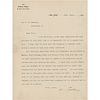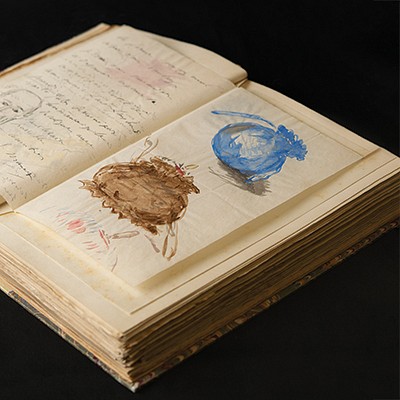Nikola Tesla Typed Letter Signed on Induction Coil Experiments
Two ways to bid:
- Leave a max absentee bid and the platform will bid on your behalf up to your maximum bid during the live auction.
- Bid live during the auction and your bids will be submitted real-time to the auctioneer.
Bid Increments
| Price | Bid Increment |
|---|---|
| $0 | $5 |
| $50 | $10 |
| $200 | $25 |
| $500 | $50 |
About Auction
Jun 14, 2023
RR Auction's June Fine Autographs and Artifacts sale boasts over 900 lots, highlighted by a special animation section of 200+ pieces of original production drawings, animation cels, and concept paintings from Disney classics like Snow White, Cinderella, and Alice in Wonderland. = RR Auction support@rrauction.com
- Lot Description
TLS signed “N. Tesla,” one page, 8 x 10.5, personal letterhead, July 25, 1894. Letter to research engineer, patent attorney, and inventor Noah Steiner Amstutz, in full: “I am receiving a great many communications such as yours of July 24th, and it is impossible for me to answer them all. I hope that you will have the kindness to remember this should a letter of that kind remain unnoticed. The identical experiment which you illustrate was performed by Messrs. Spottiswoode, Gordon and others a very long time ago, and the same observation was made in regard to the properties of the current when the breaking was rapid. I think that in your experiment the strength of the current was reduced and the E.M.F. increased when the wheel was more rapidly rotated. You have probably got in this case less energy through the body. It is difficult to say exactly what the result in your case was, because it depends entirely on the electrical constants of the circuits and on the rate of breaking.” In fine condition.
The recipient, Noah Steiner Amstutz (1864-1957), a research engineer, cartographer, and patent attorney from Cleveland, Ohio, is best remembered as a pioneer in the fields of television and facsimile transmission, whose 1896 copying telegraph system was a precursor to the fax machine. His experiment, described by Tesla as “identical” to the type performed by William Spottiswoode and James Edward Henry Gordon very likely relates to their early investigations on induction coils, a subject in which Tesla was most acutely informed.
Tesla's experience with induction coils began while working for inventor Thomas Edison in the late 1880s. While Edison was interested in improving the efficiency of his direct current (DC) electrical power system, Tesla, conversely, was an advocate for alternating current (AC) as a more effective solution. To demonstrate the power of AC, Tesla built a series of induction coils that could generate high-frequency, high-voltage electrical currents.
His most famous induction coil was the Tesla coil, which he patented in 1891. The Tesla coil uses two coils of wire, one of which is connected to a power source and the other of which is not. The power source generates a high-voltage, high-frequency current in the first coil, which creates a changing magnetic field that induces a current in the second coil. The resulting electrical discharge can create spectacular visual effects, such as lightning-like sparks and glowing gas tubes.
Tesla's work with induction coils was instrumental in the development of AC power systems, which became the dominant form of electrical power transmission in the early 20th century. His inventions and innovations continue to influence modern technology, including radio and wireless communication, robotics, and electric motors. A magnificent letter from Tesla, who, although quite busy, offers his scientific input to a fellow inventor. - Shipping Info
-
Bidder is liable for shipping and handling and providing accurate information as to shipping or delivery locations and arranging for such. RR Auction is unable to combine purchases from other auctions or affiliates into one package for shipping purposes. Lots won will be shipped in a commercially reasonable time after payment in good funds for the merchandise and the shipping fees are received or credit extended, except when third-party shipment occurs. Bidder agrees that service and handling charges related to shipping items which are not pre-paid may be charged to a credit card on file with RR Auction. Successful international Bidders shall provide written shipping instructions, including specified Customs declarations, to RR Auction for any lots to be delivered outside of the United States. NOTE: Declaration value shall be the item’(s) hammer price and RR Auction shall use the correct harmonized code for the lot. Domestic Bidders on lots designated for third-party shipment must designate the common carrier, accept risk of loss, and prepay shipping costs.
-
- Buyer's Premium



 EUR
EUR CAD
CAD AUD
AUD GBP
GBP MXN
MXN HKD
HKD CNY
CNY MYR
MYR SEK
SEK SGD
SGD CHF
CHF THB
THB











